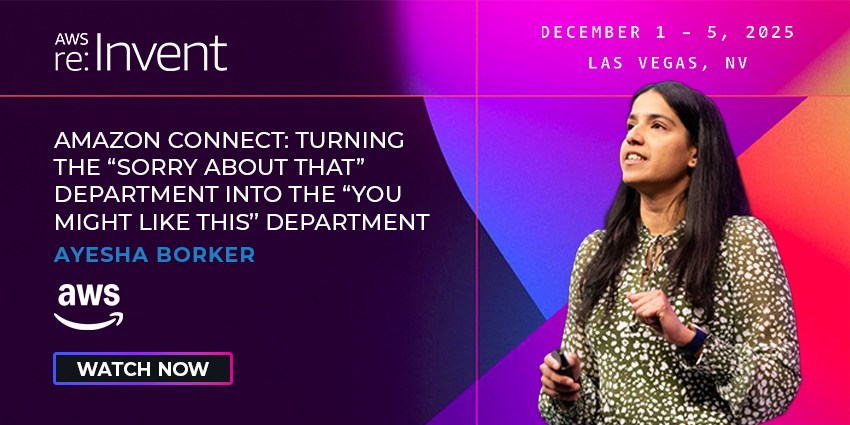When it comes to predicting change in the IT industry, advances in contact centre technology are often hard to pin down. The industry’s digital revolution is moving forwards at a rapid pace and is only growing in momentum. For example, a recent report by Gartner found that only 10% of contact centres are currently utilising the cloud, yet this is set to rise to 50% by 2022. So, although many contact centres are a million miles away from where they were ten years ago, we can still expect some drastic technological developments over the next year or so.
As the horizon comes into view, here are my top four unified communications (UC) trends to watch in 2020.
1 – The evolution of the chatbot
Until recently, many people viewed chatbots as a cheap panacea to all customer service problems, but this never quite came to fruition. In the last year or so, many have realised that, though useful, chatbots are better suited to act as part of a wider portfolio of customer service offerings. According to recent research from Customer Contact Week, only 9% of people surveyed felt that they would be best served by a chatbot for serious enquiries. Whereas the figures for a voice call were in excess of 80%.
The resurgence of voice-led interactions driven by home assistants such as Alexa, and the fact that customers still overwhelmingly prefer to speak to another human for important queries, is ushering in a new Golden Age of Voice. This has led to a growing maturity in the consumer base that sees the chatbot becoming a valuable channel, by virtue of its ability to remove agent time spent on routine enquiries. Looking into the future, what is more exciting, is the prospect of the convergence of written and verbal chatbot technology to create an advanced conversational user interface.
2 – NLP goes mainstream
I believe that 2020 will be the year Natural Language Processing (NLP) steps out of the Proof of Concept (PoC) stage and goes mainstream in the UC industry. Over the past year or so, NLP has cemented itself as a tool that opens up unprecedented insight into voice data, especially in customer journey analytics. The results are far richer than those gleaned from the metadata analysis we have been restricted to until recently. Now a much larger quantity of data can be analysed, and turned into actionable insights.
With NLP, customer calls can be categorised much more specifically, so that by the time the agent answers, they know exactly what the issue is. Queries can be resolved faster and more accurately, since the agent is more prepared before the call and won’t have to spend time searching for answers in real-time during the call.
3 – AI will become sentimental
There is now a big rush to roll out NLP everywhere, in all sectors. It is set to be a gamechanger in the contact centre industry, since it is manifestly more efficient than a traditional Interactive Voice Response (IVR) and supports agent activity.
Advancements in sentiment analysis will be the next big step for NLP and will continue to pave the way for monumental gains in the UC industry in 2020. This is where a sophisticated mix of keywords, tone of voice, and volume create a much deeper picture of the caller and their needs for the agent. With this information, businesses can ensure that each caller is routed to the agent or department best equipped to deal with their enquiry. For example, if sentiment analysis detects a customer who is distressed, the call can be routed to an agent who is experienced or trained in handling these types of conversation. This streamlines processes and ensures customers are always served by the most suitable person.
4 – Cloud Contact Centre as Value Centre
Organisations have often viewed the contact centre industry as a place to make savings, which has led to a focus on very narrow performance metrics and a general desire to reduce the number of people taking calls by automating as much as possible. However, with increasing importance being placed on customer experience as the key business differentiator, particularly in service-based and subscription organisations, there is a growing demand for the scalability made available by a cloud contact centre model.
Whereas before, the need to replace legacy infrastructure was largely driven by expensive equipment failures, we are now seeing a widespread buy-in for cloud services from C-level executives who want to improve their customer engagement. As a result, over the next two years there will be an acceleration of the shakeout of on-premise solutions towards cloud-based omni channel infrastructure.
As technologies such as NLP and sentiment analysis become more mainstream, it will be even more important for organisations across the industry to start investing more in cloud technologies that improve the experience for their customers, and their agents.

Guest Blog by Martin Taylor, Co-Founder and Deputy CEO at Content Guru
We deliver cloud communications solutions that help organizations like yours provide the best customer engagement and experience. From our omni-channel cloud contact center solution to our bespoke integration systems, we use cutting-edge technology to transform communications and make mass personalization a reality. This includes our development of AI and propensity modelling to create the seamless end-to-end customer journeys that inspire loyalty and power the success of organizations worldwide.







